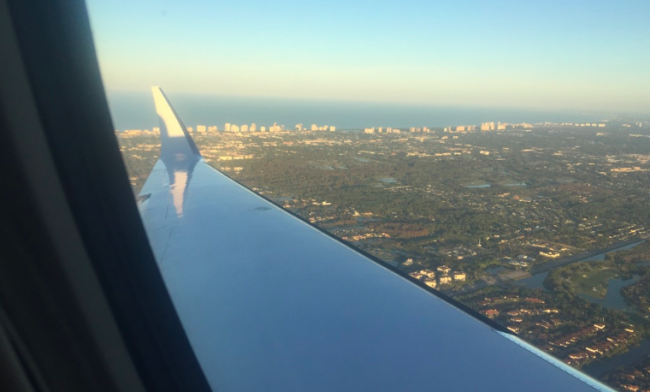
(Updated Dec. 27, 2019) Founded in 1999, Sentient Jet lays claim as
In a market where 40% of the broker jet card providers we track have under 20 employees, Sentient Jet with a headcount of around 100 and the breadth of Directional brings scale to the party.
Andrew Collins, who serves as CEO of the Sentient, Skyjet and PrivateFly group, says Directional is one of the industry’s biggest purchasers of Part 135 charter. Aggregating so much demand means Sentient is often buying blocks of time on an aircraft instead of single segments. That gives it three key advantages, including low lead time for reservations (only 10 hours), flexibility (only 10 hours for cancellations) and low segment and daily minimums that include taxi time (60 minutes for light and midsize jets, 90 minutes for
For business travelers who need to change plans on short notice and those of you who make shorter flights it means even when Sentient’s hourly rates are higher, the actual cost of flights is lower than cards with higher minimums.
Sentient also takes a consumer-friendly approach to pricing. The numbers you will find on its website (and in the spreadsheets here at Private Jet Card Comparisons) include 7.5% Federal Excise Tax and deicing. There are no fuel surcharges and no CPI escalators. There are also no membership fees or dues. From a delivery standpoint, Sentient was Business Jet Traveler’s winner for overall customer satisfaction including a 100% satisfaction score.
Sentient offers nine five jet different cards in increments of 25 hours. There are two cards for light jets. each aircraft size category (light, midsize and large) except super-midsize which has three. In the light jet category, Preferred refers to aircraft manufactured in 2000 or later. Select offers aircraft delivered 1999 or before. For midsize, super-midsize, and large cabin jet SJ25+ means newer aircraft and guaranteed Wifi.
In a curious pricing twist, the SJ25+ super-midsize card with Wifi card is priced lower ($224,275) than both the . With all cards, you also can trade up or down without interchange fees. It’s a bit confusing if you are just browsing.
Collins says the typical customer runs through their deposit in eight months. Aside from infrequent promotions, the minimum commitment is 25 hours and funds are non-refundable.
Part of the Sentient offering is an impressive array of lifestyle partners. The 2018 catalog offered over $125,000 in discounts and freebies, including free nights at luxury hotels and waivers on partner memberships and so forth.
In terms of the planes you will be flying on, Sentient uses what is referred to as a closed fleet of aircraft. Out of the more than 7,000 Part 135 aircraft and 2,000 operators that can be sourced for charter, Sentient has certified over 1,200 planes from 160 operators. With the operators it uses, not all aircraft of each operator is used by Sentient. The company will not go outside of Sentient Certified aircraft under any situation. It also audits aircraft it uses twice a year with inspectors based in Los Angeles, Teterboro, and Westchester County Airport, a good way to catch jets coming and going through these high traffic ports.
Sentient has an additional team of five directors who spend much of their time on the road visiting the operators Sentient uses. During those visits, in addition to technical and operational audits, the company takes photographs of cabin interiors and verifies amenities the operator has listed for each aircraft such as WiFi. The Sentient Certified safety program is built like an airplane with multiple redundancies. Crews for each flight are run through the system three times before departure. Average flying time for captains is 9,400 hours. The company has a Safety Advisory Council chaired by Tom Haueter, former NTSB Office of Aviation Safety Director and Greg Phillips, former lead investigator. The company also re-inspects its operators after material changes, such as ownership, new chief pilot or executive staff. He says that these changes can impact culture at an operator, and Sentient would prefer to put that operator on hold until it can review the company first hand. Sentient uses its own internal process in place of touting ARGUS, Wyvern and IS-BAO ratings in its marketing.
– Guaranteed availability and fixed one-way pricing, including Europe in addition to North America
– Pricing transparency
– Competitive hourly rates
– Lead-time for reservations
– Lead-time for cancellations
– Taxi time is included in minimums
– Lower segment and daily minimums than most other broker programs
– Deicing is included
– High customer ratings
– Guaranteed WiFi on midsize, super-midsize, and large cabin jets
– Comprehensive safety program
– 15% discount for qualifying roundtrips (lower on large-cabin jets)
– Low 5% peak day surcharge and only 21 peak days
– Industry-leading lifestyle partnerships offer some serious savings and are worth taking into consideration before buying
– Entry-level programs start at 25 hours
– Program is non-refundable
– No fixed rate turboprop options
– Wifi is only guaranteed on super-midsize
We’d love to see Sentient come out with a 15-hour card for new members. While it offers an escrow account option and funds never expire, we see enough people who want to move from on-demand charter to a jet card but are only looking for less than 25 hours to start. In looking at its ratings from Business Jet Traveler, every respondent rated it Excellent/Very Good in terms of Overall Satisfaction.
In a recent survey of Private Jet Card Comparisons subscribers, those who bought from Sentient used value, safety,